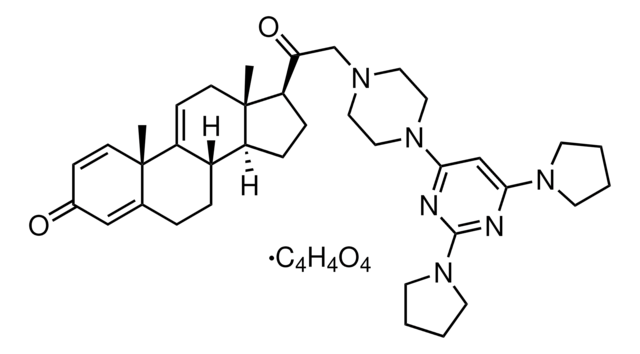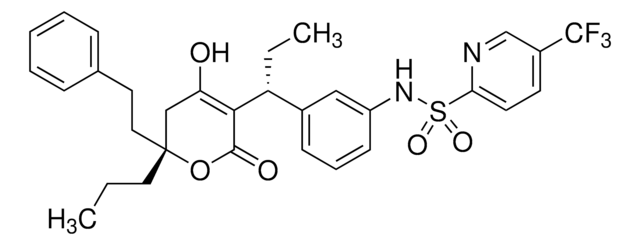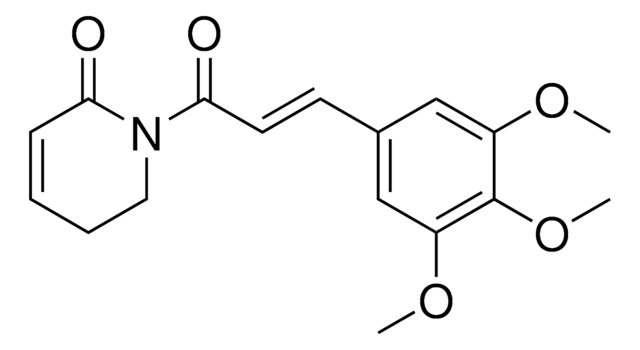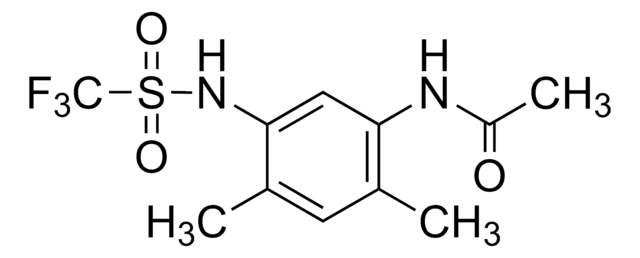Q4990
QBP1
≥95% (HPLC)
同義詞:
L-Seryl-L-asparaginyl-L-tryptophyl-L-lysyl-L-tryptophyl-L-tryptophyl-L-prolylglycyl-L-isoleucyl-L-phenylalanyl-L-aspartic acid trifluoroacetate salt
About This Item
推薦產品
化驗
≥95% (HPLC)
形狀
powder
顏色
white
溶解度
H2O: >1 mg/mL
儲存溫度
−20°C
SMILES 字串
OC(=O)C(F)(F)F.CC[C@H](C)[C@H](NC(=O)CNC(=O)[C@@H]1CCCN1C(=O)[C@H](Cc2c[nH]c3ccccc23)NC(=O)[C@H](Cc4c[nH]c5ccccc45)NC(=O)[C@H](CCCCN)NC(=O)[C@H](Cc6c[nH]c7ccccc67)NC(=O)[C@H](CC(N)=O)NC(=O)[C@@H](N)CO)C(=O)N[C@@H](Cc8ccccc8)C(=O)N[C@@H](CC(O)=O)C(O)=O
InChI
1S/C72H90N16O16.C2HF3O2/c1-3-39(2)62(70(101)84-52(28-40-16-5-4-6-17-40)65(96)86-57(72(103)104)33-61(92)93)87-60(91)37-79-69(100)58-25-15-27-88(58)71(102)56(31-43-36-78-50-23-12-9-20-46(43)50)85-67(98)54(30-42-35-77-49-22-11-8-19-45(42)49)82-64(95)51(24-13-14-26-73)80-66(97)53(29-41-34-76-48-21-10-7-18-44(41)48)83-68(99)55(32-59(75)90)81-63(94)47(74)38-89;3-2(4,5)1(6)7/h4-12,16-23,34-36,39,47,51-58,62,76-78,89H,3,13-15,24-33,37-38,73-74H2,1-2H3,(H2,75,90)(H,79,100)(H,80,97)(H,81,94)(H,82,95)(H,83,99)(H,84,101)(H,85,98)(H,86,96)(H,87,91)(H,92,93)(H,103,104);(H,6,7)/t39-,47-,51-,52-,53-,54-,55-,56-,57-,58-,62-;/m0./s1
InChI 密鑰
VSUBSHMCMRUEAG-IQVZWRNHSA-N
應用
生化/生理作用
儲存類別代碼
11 - Combustible Solids
水污染物質分類(WGK)
WGK 2
閃點(°F)
Not applicable
閃點(°C)
Not applicable
分析證明 (COA)
輸入產品批次/批號來搜索 分析證明 (COA)。在產品’s標籤上找到批次和批號,寫有 ‘Lot’或‘Batch’.。
我們的科學家團隊在所有研究領域都有豐富的經驗,包括生命科學、材料科學、化學合成、色譜、分析等.
聯絡技術服務








